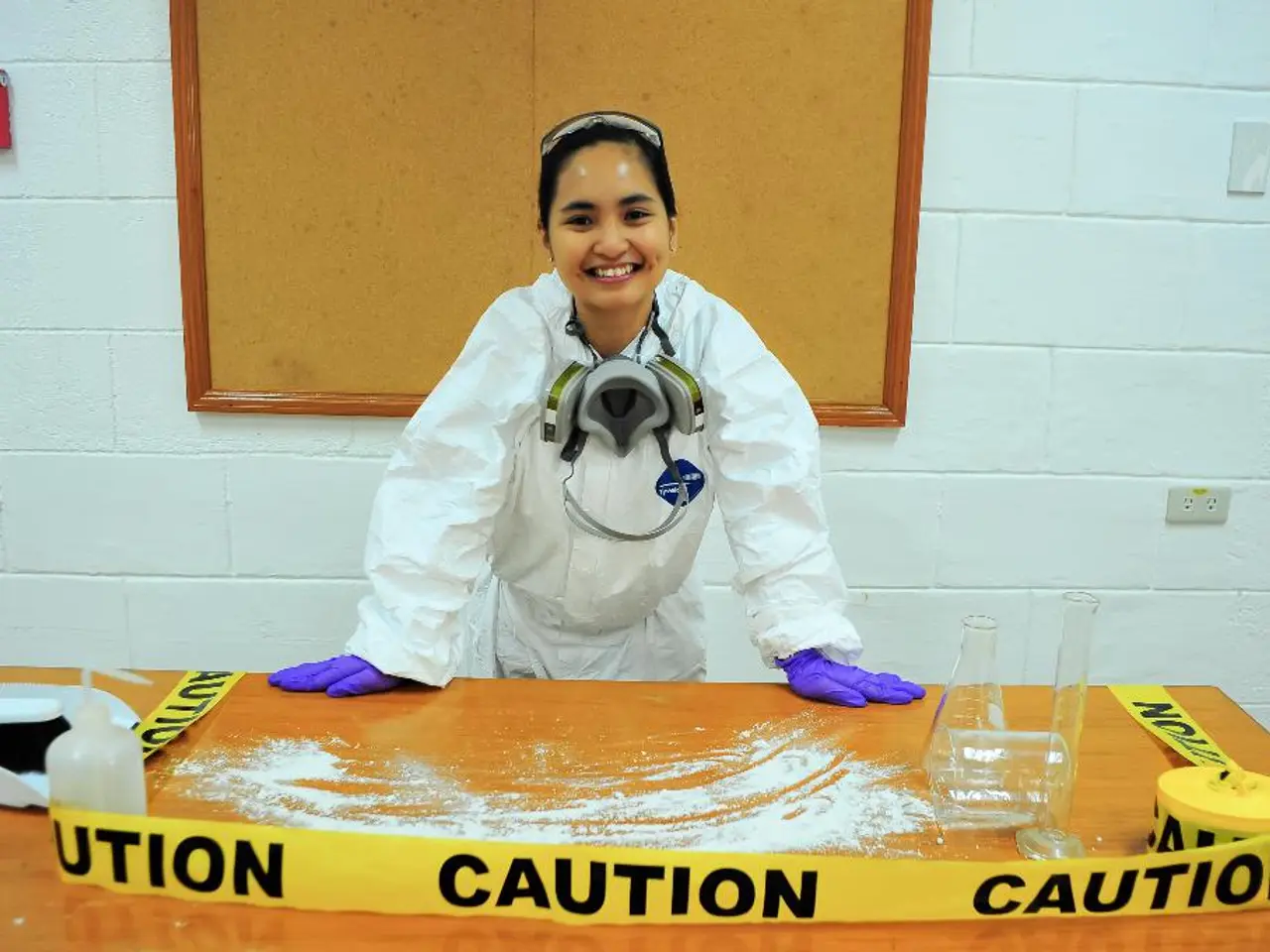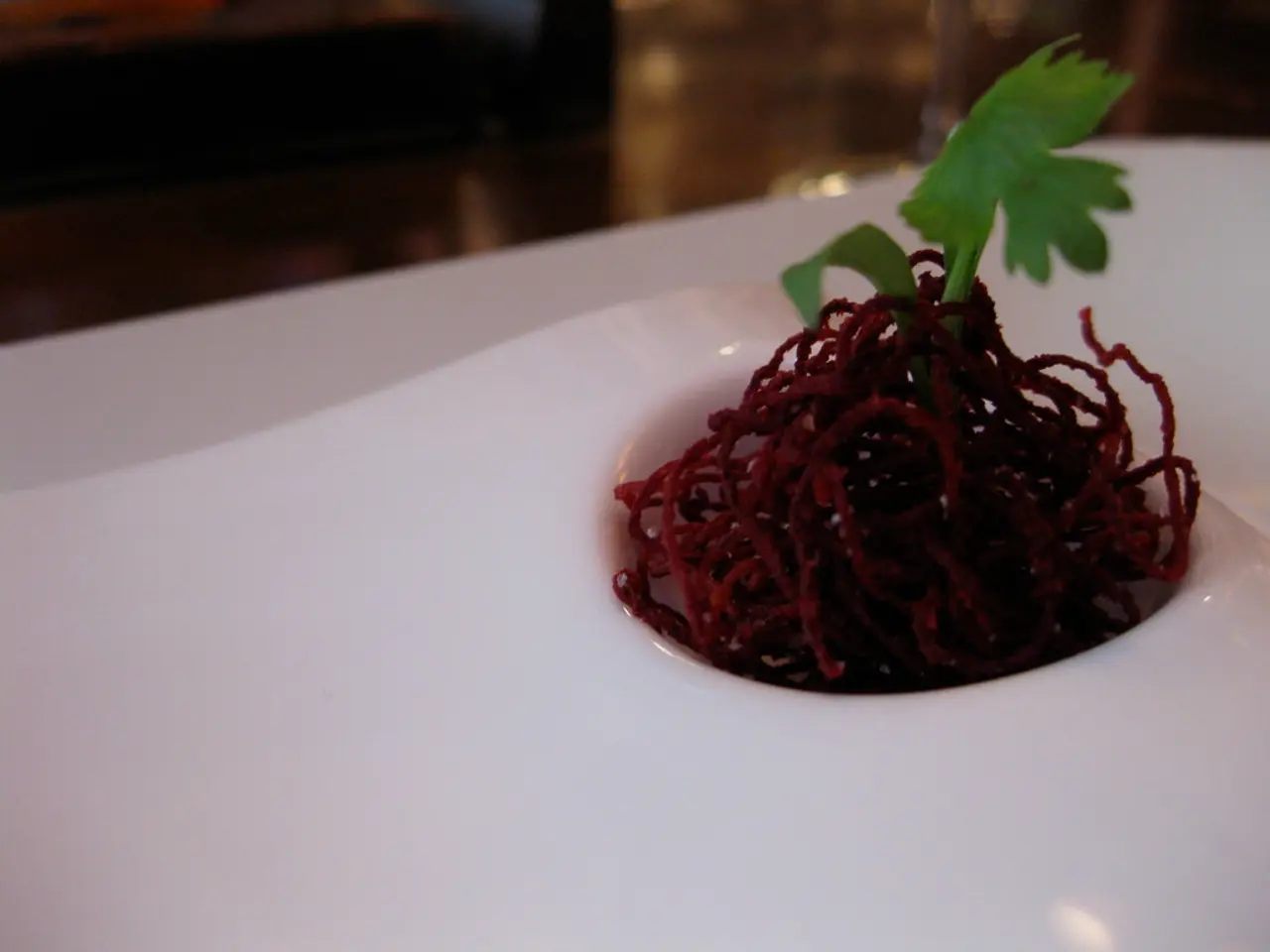Utilizing apple cider vinegar for poison ivy rash: Instructions
In the quest for relief from poison ivy rash, apple cider vinegar (ACV) is a popular home remedy, but its effectiveness is questionable. While anecdotal reports suggest immediate and temporary relief from itching and drying out of the rash, scientific evidence is lacking, and results can vary widely among individuals.
Dermatologists generally advise caution with home remedies and recommend proven treatments such as cool compresses, calamine lotion, and over-the-counter hydrocortisone cream. However, several alternative home remedies are commonly suggested, though their effectiveness is also largely anecdotal.
One such alternative is baking soda, which can be mixed with water or vinegar into a paste and applied to the rash to help relieve itchiness and dry out the rash. Aloe vera, known for its soothing and anti-inflammatory properties, can also be applied directly to the rash for relief. Colloidal oatmeal baths and topical applications of coconut oil may also provide relief, thanks to their anti-inflammatory and antimicrobial properties.
It is important to note that no specific research supports the use of ACV as a treatment for poison ivy rash. The American Academy of Dermatology and other health organisations do not endorse its use. Moreover, applying ACV to broken skin should be avoided, and it should be diluted with water if necessary when applied to a rash.
Rashes caused by poison ivy will usually clear within 2-3 weeks. However, if the rash is severe, covers a large area, affects the face or genitals, or shows signs of infection (pus, increasing redness, warmth), it is essential to consult a healthcare professional.
To prevent the spread of the rash, it is crucial to wash the affected area with soap and cool water, remove and wash any clothing that may have come into contact with the plant, use soap, water, and gloves to wash any other items, and avoid scratching the skin or bursting any blisters.
If a pet has come into contact with poison ivy, wash their fur with soapy water to prevent the oil from transferring. Always consult a vet if you suspect your pet has been exposed to poison ivy.
In conclusion, while apple cider vinegar may provide temporary relief for some, its effectiveness is questionable, and dermatologists generally recommend proven treatments. Always patch-test home remedies and dilute acids like vinegar to avoid skin irritation. For persistent or severe rashes, consulting a dermatologist is advised.
- Despite the widespread use of apple cider vinegar (ACV) for poison ivy rash relief, scientific evidence supporting its effectiveness is limited.
- Alternative home remedies, such as baking soda, aloe vera, colloidal oatmeal, and coconut oil, are often suggested for relief, but their effectiveness is also primarily anecdotal.
- Skin care enthusiasts might find vinegar in their health-and-wellness routines, but it's important to remember that the American Academy of Dermatology doesn't endorse its use for poison ivy rash.
- In addition to home remedies, dermatologists suggest proven treatments like cool compresses, calamine lotion, and over-the-counter hydrocortisone cream.
- In the home-and-garden realm, if pets come into contact with poison ivy, it's crucial to wash their fur with soapy water to prevent the oil from transferring, and always consult a vet if you suspect exposure.
- Lifestyle and gardening practices should include careful clothing changes to avoid rash spread when working in areas with poison ivy, and avoiding the urge to scratch or burst blisters.




